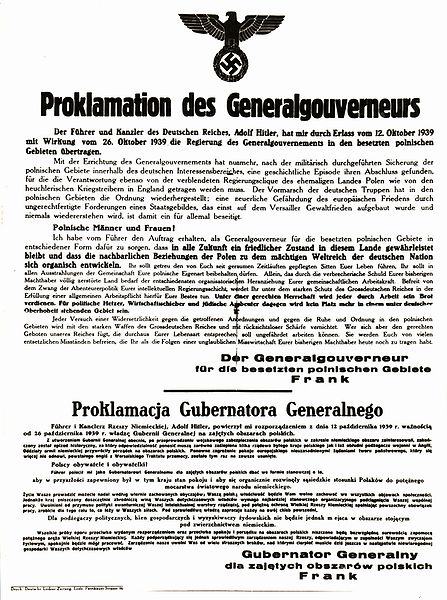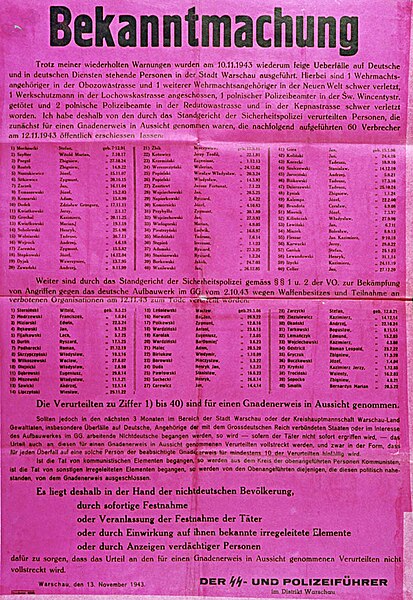During World War II, Trawniki men were Central and Eastern European Nazi collaborators, consisting of either volunteers or recruits from prisoner-of-war camps set up by Nazi Germany for Soviet Red Army soldiers captured in the border regions during Operation Barbarossa launched in June 1941. Thousands of these volunteers served in the General Government territory of German-occupied Poland until the end of World War II. Trawnikis belonged to a category of Hiwis, Nazi auxiliary forces recruited from native subjects serving in various jobs such as concentration camp guards.
Inspection of Trawnikimänner (some of them still wearing Soviet Budenovkas) by SS-Hauptsturmführer Karl Streibel (center) at the SS Trawniki training division. As Hiwis, they were tasked with liquidating Nazi-era Jewish ghettos in occupied Poland
Stroop Report Trawniki shooters during the Warsaw Ghetto Uprising, with Jürgen Stroop (on the right), 1943 at the Umschlagplatz, with Stawki 5/7 in the back. Their military overcoats came from the Allgemeine-SS surplus no longer used by the German SS.
"Trawniki" men during the destruction of the Warsaw Ghetto at Zamenhofa 42 / Kupiecka 18.<. Photo from Jürgen Stroop Report, May 1943
Picture of Trawniki guards at Sobibor, taken in 1943. Demjanjuk has been "inconclusively identified" as the guard in the middle front left.
The General Government, formally the General Governorate for the Occupied Polish Region, was a German zone of occupation established after the invasion of Poland by Nazi Germany, Slovakia and the Soviet Union in 1939 at the onset of World War II. The newly occupied Second Polish Republic was split into three zones: the General Government in its centre, Polish areas annexed by Nazi Germany in the west, and Polish areas annexed by the Soviet Union in the east. The territory was expanded substantially in 1941, after the German Invasion of the Soviet Union, to include the new District of Galicia. The area of the Generalgouvernement roughly corresponded with the Austrian part of the Polish–Lithuanian Commonwealth after the Third Partition of Poland in 1795.
Hans Frank, head of the General Government, at a police parade in Kraków during the German occupation of Poland
Official proclamation of the General-Government in Poland by Germany, October 1939
Hans Frank with district administrators in 1942 – from left: Ernst Kundt, Ludwig Fischer, Hans Frank, Otto Wächter, Ernst Zörner, Richard Wendler
Announcement of the execution of 60 Polish hostages and a list of 40 new hostages taken by Nazi authorities in Poland, 1943








